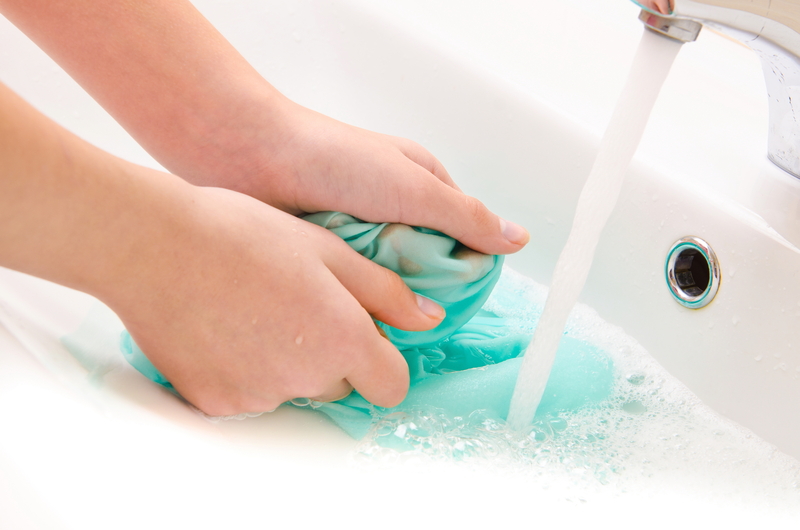Cleaning Burnt Residue? Let's Make Your Stovetop Shine Again
Posted on 27/05/2025
Cleaning Burnt Residue? Let's Make Your Stovetop Shine Again
Is your stovetop covered in stubborn burnt residue that just won't budge? Worry no more! In this article, we'll guide you through practical, effective, and safe techniques to restore your stove's shine. Whether you're dealing with a glass, ceramic, or gas stovetop, these methods will help you eliminate burnt-on stains and grime, making your kitchen the sparkling heart of your home once again.
Understanding Burnt Residue on Stovetops
Burnt residue is more than just an eyesore--it can harbour bacteria, affect cooking performance, and even cause lasting damage if left unchecked. Typically, burnt stains are the result of food, sauces, or oils spilling over and getting cooked onto the stove's surface. Over time, this residue hardens, becomes increasingly difficult to remove, and can cause permanent discoloration.
Let's take a closer look at why it's crucial to clean burnt residue regularly:
- Hygiene: Burnt food can attract pests and germs.
- Odors: Residue leads to unpleasant smells.
- Cooking Performance: Build-up can interfere with burner efficiency.
- Appearance: A clean stovetop enhances your kitchen's appeal.

How to Clean Burnt Residue from Different Stovetops
Before starting, always check your manufacturer's cleaning recommendations to avoid damaging your appliance. The strategies for cleaning burnt stains may differ depending on your stovetop type.
1. Glass and Ceramic Stovetops
Glass and ceramic surfaces are visually pleasing but can scratch or crack if scrubbed too vigorously. Here's a detailed step-by-step method:
- Allow the stovetop to cool completely.
- Wipe away loose debris using a soft cloth.
- Make a cleaning paste: Mix equal parts baking soda and water.
- Apply the paste liberally over the burnt residue and let it sit for 15-20 minutes.
- Use a non-abrasive nylon scrubber or sponge and gently scrub the area in a circular motion.
- For extra-stubborn stains, gently use a plastic scraper held at a 45? angle--never use metal, as this may scratch the surface.
- Wipe clean using a damp microfiber cloth.
- Dry thoroughly and buff for maximum shine!
2. Gas Burners and Metal Grates
Gas stoves require a slightly different approach since grates and burners are removable, allowing for deeper cleaning.
- Turn off all burners and ensure every part is cool.
- Remove metal grates and burner caps. Soak them in hot, soapy water for at least 20 minutes to loosen burnt residue.
- Scrub the grates with a firm-bristled brush or non-scratch pad. For tough stains, sprinkle baking soda directly on the grime, add a little water, and scrub.
- For extremely stubborn spots, create a soak solution of vinegar and water. Let the grates sit overnight if needed.
- Rinse thoroughly and dry before reassembling.
- Clean the stovetop base using a sponge dampened with soapy water. For burnt-on stains, apply a baking soda paste and follow the steps similar to glass stovetops.
3. Electric Coil and Drip Pan Stovetops
Electric coil stovetops and their accompanying drip pans can accumulate grime fast. Here's how to refresh them:
- Unplug the stove or ensure all controls are off.
- Remove coils (if your model allows) and drip pans. Wipe off loose crumbs.
- Soak drip pans in a mix of hot water and dish soap. After 10-15 minutes, apply a paste of baking soda and water to burned areas.
- Scrub with a soft brush or sponge.
- For coils, wipe gently with a damp cloth--never submerge electrical parts in water.
- Let all components dry completely before putting them back.
Natural Stovetop Cleaning Solutions for Burnt Residue
Commercial cleaning sprays can be effective but may leave unpleasant scents or chemical residues. For a more eco-friendly approach, try these natural methods:
Lemon Juice and Baking Soda
- Saturate the burnt area with lemon juice.
- Sprinkle baking soda over the juice. The mixture will fizz, helping to lift stains.
- Let it sit for 10-20 minutes before scrubbing with a sponge.
White Vinegar Spray
- Mix equal parts white vinegar and water in a spray bottle.
- Spritz directly onto burnt residue and cover with a warm, damp cloth.
- After 15 minutes, wipe away buildup.
- Vinegar not only dissolves grime but leaves your stovetop streak-free and gleaming.
Expert Tips for Preventing Burnt Residue
Prevention is just as important as cleaning. Here are some expert recommendations to keep your stovetop sparkling with minimal effort:
- Wipe spills immediately: Address accidents as they happen to prevent burnt-on messes.
- Use burner covers: Smart accessories can catch drips before they reach the stove surface.
- Cook with care: Avoid overfilling pots and boiling over.
- Establish a regular cleaning schedule: Even a quick daily wipe-down can save hours in deep cleaning later.
- Don't let oil and grease sit for too long--these cause sticky stains that attract more grime.
Common Mistakes to Avoid when Cleaning Burnt Residue
Cleaning your stovetop's burnt residue involves some dos and don'ts. Avoid these frequent errors to prolong your appliance's life:
- Using abrasive scouring pads: These can scratch glass, ceramic, and stainless steel.
- Neglecting to let the stovetop cool: Cleaning a hot stove can be dangerous and cause chemical fumes.
- Submerging electric burners: Moisture in the coils can ruin their function.
- Applying harsh chemicals: Read all instructions and avoid anything not recommended by your stovetop manufacturer.
- Skipping the rinse: Soap and cleaner residue can cause streaks and odors.
Frequently Asked Questions About Cleaning Burnt Residue
Can I use a razor blade on burnt stovetop residue?
For glass or ceramic tops, a razor blade scraper can be effective on burnt patches but only when used carefully. Always hold it at a shallow angle and use gentle, steady pressure. Never use on gas or electric tops, and avoid if the manufacturer advises against it.
What's the fastest way to remove burnt-on stains?
A baking soda and vinegar paste is one of the quickest DIY solutions. Apply, let it bubble for a few minutes, and wipe away while still moist.
Are commercial cleaners safe for all stovetops?
Not all commercial cleaners suit every surface. Always opt for products specifically labeled for your stovetop type to prevent damage and voiding warranties.
How often should I deep clean my stovetop?
For optimal kitchen hygiene and performance, deep clean your stovetop monthly, and spot-clean after each use.
Advanced Methods for Extremely Stubborn Burnt Residue
When home remedies fail, sometimes it's necessary to use advanced techniques. Consider these methods for persistent, heavy-duty burnt-on grime:
- Steam Cleaning: Handheld steam cleaners loosen the most resilient gunk without chemicals. Simply direct the nozzle at the stain and wipe away softened residue.
- Professional Products: Pastes and gels formulated specifically for burnt residue, like Bar Keepers Friend or Weiman Cooktop Cleaner, can handle the toughest stains. Follow instructions closely.
- Enzyme Cleaners: For organic food messes, enzyme-based cleaners can break down burnt foods safely.
- Repeat application: For layered stains, several cleaning rounds may be necessary.

How to Make Your Stovetop Shine Again
Once the residue is gone, you'll want your stovetop to stay brilliant and resist new stains. Here's the final touch:
Polishing for Ultimate Sparkle
- For glass and ceramic tops, apply a little white vinegar and buff with a soft, dry microfiber cloth to eliminate smears and watermarks.
- On stainless steel stoves, polish with a small amount of olive oil: rub gently with the grain for a stunning shine.
- For gas burners and grates, make sure everything is thoroughly dry before lighting to maintain a spotless finish.
Tip: Regularly maintain your stovetop's shine with quick daily wipe-downs and immediate attention to spills. The secret to a sparkling kitchen is consistency!
Conclusion: Enjoy a Burnt-Residue-Free Stovetop!
Cleaning burnt residue doesn't have to be a daunting task. With the right tools, a little patience, and the tips shared above, your stovetop can shine like new. Choose the method suited to your stovetop's material and level of staining, and always handle cleaning products with care. Remember, a spotless stove not only improves the look of your kitchen but also enhances safety and food taste. Make cleaning burnt residue a habit and let your stovetop sparkle for years to come!
- Start with gentle solutions whenever possible.
- Read your appliance's care guide before trying new products.
- Stay proactive: Quick clean-ups prevent big messes.
Have your own stovetop-cleaning secret? Share your tips and tricks in the comments below, and spread the joy of a shining, burnt-residue-free kitchen!



